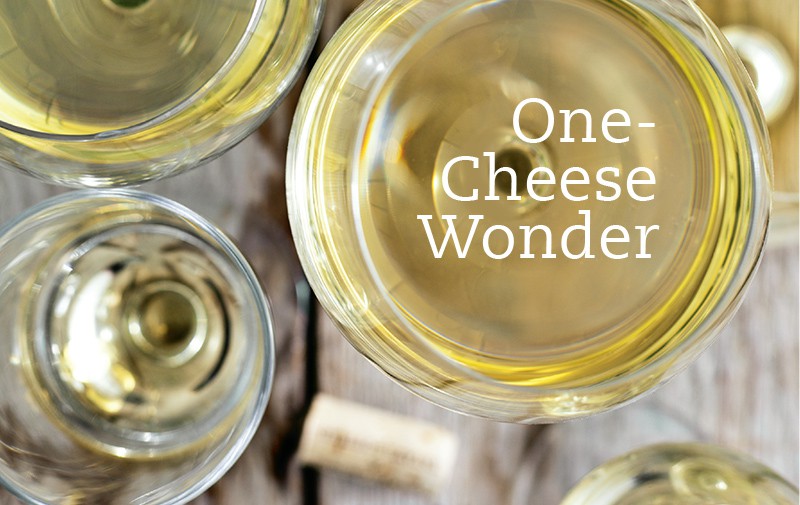
Stinky cheeses. Gooey cheeses. Blues, washed rinds, and bloomy goats—these are the cheeses cheese nerds tend to make the most fuss over, the ones I always felt compelled to serve after dinner in order to establish my cheese cred, no matter how headache inducing was the quest to find a wine to match.
But Carina and Konrad Nagele, Austrian cheesemongers and wine importers in Hamburg, Germany, recently showed me that there’s another way; it’s called Bergkäse, or, roughly, mountain cheese.
The cheese the Nageles deal in taste nothing like supermarket Swiss, although most are relatively tame. but tame, it turns out, doesn’t have to mean dull. They buy only Austrian cheese from the Tyrolian Alps, made from the milk of animals that graze high in the mountain peaks, dining on alpage (a fancy term for the vividly scented grass, flowers, and wild plants that survive in chilly high altitudes). It used to be that the herders had no way to get the milk down from the mountain on a regular basis, so they’d instead turn the morning and evening milkings into cheese, a tradition that has held on. These cheeses tend to be very large—50-pound wheels are common—so they need long aging. The end result tends to be dense and mild, with the soft sweetness of its rich, fragrant milk, and is markedly lower in acidity than many.
At first I thought of these cheeses more as breakfast fare, the same way I’d go for Nutella instead of 85 percent dark chocolate before 8 a.m. But one day Konrad revealed that he used to be a sommelier at one of Vienna’s top restaurants. In his broken English and my utterly fractured German, we talked wine, and he revealed an entirely different side of these mountain cheeses.
He started me off easy, suggesting a nice young Riesling to try with some youngish Bergkäse. From there the suggestions got wilder. Neuberger, Rotgipfler, Roter Veltliner, Gewürztraminer… each grape he suggested was more fragrant and highly spiced than the last—until it hit me: these are the wines that can turn the wine-and-cheese relationship on its head. With strong, funky cheeses wines need to play along, so they can’t have too strong a personality. Mountain cheeses, on the other hand, can act as stages for powerful, opulent wines: their density allows them to handle alcohol and acidity with ease, but they also have a sweet mellowness that won’t fight with a wine that’s flamboyantly fragrant. In fact, it’s a plus when it comes to the edge of bitterness common to many fragrant wines, as the mellowness of the cheese balances the bitterness of the wine or tones it down.
Of course, this isn’t new news: the cheese eaters of France’s Jura have long been enjoying Comté with hazelnutty Savagnin, just as the Swiss have long enjoyed its more floral, spicy relative, Gewürztraminer, with fondue and raclette. But it’s a good reminder, especially with the busy holidays coming up, that putting together a complex cheese course can be too much to ask. Instead, find one good chunk of mountain cheese—or something sweet, nutty, and mellow, aged long in a big wheel so it’s dense and creamy. Pull out one bottle of something opulently flavored—Gewürztraminer is the most common choice, but mountain vineyards all over Switzerland, northern Italy, southern Austria, and France’s Jura are filled with high-acid, wildly nuanced alternatives— and pour it all around. It’s amazing how a wine that can be so challenging to pair with anything else fits so easily next to one of these cheeses.And how quickly both can disappear.
Some mountain (or mountain-style) cheeses to look for:
- Appenzeller
- Beaufort
- Bergkäse Alt
- Comté
- Hoch Ybrig
- L’Etivaz
- Pleasant Ridge Reserve
- Sbrinz
- Tarentaise (firm, cow’s milk variety)
- Tilsiter
And some wines to match:
A. & M. Quenard 2009 Vin de Savoie Les Abymes, $16 (Kermit Lynch Wine Merchant; Berkeley, Calif.)
Abbazie di Novacella 2007 Alto Adige Gewürztraminer, $28 (Vias Imports; New York, N.Y.)
Contrà Soarda 2007 Veneto Bassano del Grappa VignaSilan Vespaiolo, $26 (Jan d’Amore Wines; Brooklyn, N.Y.)
Dr. Loosen 2008 Mosel Kabinett Bernkasteler Lay Riesling, $26 (Loosen Bros. USA; Salem, Ore.)
Edi Kante 2006 Vitovska Friuli, $40 (Italy)
Éric Chevalier 2009 Vin de Pays du Jardin de la France Loire Fié Gris, $25 (Kermit Lynch Wine Merchant; Berkeley, Calif.)
Grosjean 2008 Valle d’Aosta Vigne Rovetta Petite Arvine, $25 (Neal Rosenthal Selections; New York, N.Y.)
Jacques Puffeney 2005 Arbois Blanc Savagnin, $30 (Neal Rosenthal Selections; New York, N.Y.)
K. Alphart 2009 Thermenregion Hausberg Neuberger, $21 (Domaine Select Wine Estates; New York, N.Y.)
St. Jodern Kellerei 2007 Visperterminen Heida, Wallis (Swiss Cellars; Mt. Horeb, Wis.)
Stadlmann 2008 Thermenregion Tagelsteiner Rotgipfler, $21 (Frederick Wildman and Sons; New York, N.Y.)
Trimbach 2000 Alsace Vendanges Tardives Gewürztraminer, $75 (Diageo Château & Estate Wines; New York, N.Y.)




